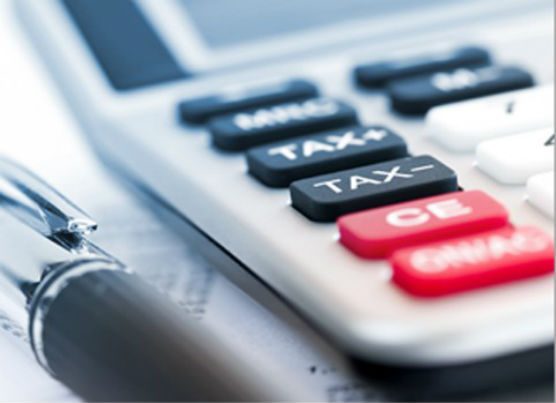SACRAMENTO — Aided by a booming third quarter, California’s economic recovery is gaining steam with analysts estimating Wednesday that tax collections could outpace the summer’s projections by $26 billion.
The unexpected windfall will result in a major boost for school funding and give lawmakers and Governor Gavin Newsom more wiggle room in next year’s budget to fight the COVID-19 pandemic, according to the state Legislative Analyst’s Office.
Despite the positive indicators, the new report predicts it will take the Golden State several years to dig out of its budget deficit.
“Although the state economy abruptly ground to a halt in the spring with the emergence of coronavirus disease 2019, it has experienced a quicker rebound than expected,” the analyst’s office states. “While negative economic consequences of the pandemic have been severe, they do not appear to have been as catastrophic from a fiscal standpoint as the budget anticipated.”
Like all states, California fell off a fiscal cliff this past spring due to mandatory lockdowns and other efforts taken to stem the spread of COVID-19. The rapid job losses and business closures zapped the state’s main sources of revenue in corporate, sales and personal income taxes.
“Numbers like this haven’t been felt like this since the Great Depression,” Newsom said in May while announcing the state faced a record $54 billion deficit.
But as businesses and California’s 40 million residents began to adapt to life in a pandemic, shopping habits returned, unemployment dampened after an initial surge and the stock market rebounded, all resulting in increased tax collections.
According to the report, consumer spending improved each month from May-October and has recovered to about 10% of pre-pandemic benchmarks. Though state unemployment peaked at 16% — the highest since the Great Depression — it didn’t come close to the disastrous 25% figure projected in the current budget. Statewide unemployment was 11% in September and October’s numbers are expected later this week.
Meanwhile, another key development was the return of a bull market, as many of the California-based tech companies saw their stock prices recover, some to record highs.
While Wednesday’s fiscal checkup reveals encouraging economic patterns, it nonetheless highlights the glaring unevenness of the recovery in a state already notorious for a sharp divide between the rich and poor.
Some of the hardest-hit industries include hospitality, tourism, restaurants and personal services, meaning low-wage workers continue to be the main target of the pandemic’s wrath. As of September, Californians making under $20 per hour have seen most of the job losses, in contrast to people making over $60 per hour who remain employed at pre-pandemic levels.
“This recovery, however, has been incomplete and uneven. Many low‑wage, less‑educated workers remain out of work, while few high‑wage, highly educated workers have faced job losses,” the report said.
California’s tax scheme is known for volatile swings as it relies heavily on the state’s top earners, meaning the coffers suffer greatly when the stock market tanks. But during the current recession, the system is actually driving better-than-expected returns even with double-digit unemployment.
“The progressive nature of the personal income tax structure has actually worked to the state’s benefit in the current environment because the people at the higher end of the distribution have been less impacted,” said Gabriel Petek, who heads the nonpartisan analyst’s office. “There’s actually been a fair amount of venture capital and IPO activity in our tech sector; those activities have really made it so our tax collections have held up pretty well.”
Petek said if conditions hold through the rest of the financial year, Newsom and the Legislature could have an unexpected one-time $26 billion “windfall” to divvy up. He’s advising lawmakers to proceed with caution and focus on replenishing reserves and mitigating financial harm caused by the pandemic.
“This would be a good use of one-time funds and better prepare the state’s fiscal condition for future stress,” Petek told reporters.
Petek’s projection is based on preliminary tax receipts for the first four months of the fiscal year that are $11.3 billion ahead of projections and of the severity of cuts and maneuvering taken to balance the current 2020-21 budget. He adds that the final windfall could peak at $40 billion or drop to $12 billion, depending on how the recovery proceeds.
State Democrats have caught wind of the eye-opening projection and are already drawing up ways to spend the windfall this time around after being forced to make significant cuts to education and social programs last summer.
“Top Assembly priorities will include continued oversight to improve the function of the Employment Development Department, reopen schools safely and bolster worker protections,” said Assembly Speaker Anthony Rendon, D-Lakewood.
“In addition, it will be important to work with the governor to promote a strong vaccine distribution program and continued pandemic response,” Rendon said. “I look forward to collaborating with the Senate and the governor to advance our work on fire protection, respond to the climate crisis, and help support homeless Californians.”
Senate President Pro Tem Toni Atkins, D-San Diego, said if conditions continue to improve, she will push to restore education cuts, reverse state employee pay cuts and give a boost to cash-strapped local governments.
“Our top goal remains clear — avoid having the state become part of the economic problem, which means avoiding cuts to programs and middle-class tax increases that do more harm to the economy than they provide in terms of budget-balancing benefits,” Atkins said in a statement.
California’s budget runs from July to June. Newsom is scheduled to release his first budget proposal in January, with a revision in May.
Looking forward, Petek warns that while lawmakers will likely be faced with a much smaller deficit when negotiating the next spending plan, future years look bleaker.
Due largely to increased spending on the state’s main expenses like Medi-Cal and education, Petek’s office predicts general fund expenditures will greatly outpace tax collections and result in a potential $17 billion deficit by 2024-25.
On the bright side, Petek said the governor and Legislature should have plenty of time to make adjustments unlike last summer’s sudden, historic plunge.
“It’s fortunate that we have sort of some lead-time, we know that the deficit is relatively smaller in the first year and growing larger thereafter. But this gives us time, especially when you couple it with the windfall,” Petek said optimistically.
— By Nick Cahill, CNS
Like this:
Like Loading...
Related





 Tweet This
Tweet This Facebook
Facebook Digg This
Digg This Bookmark
Bookmark Stumble
Stumble RSS
RSS




























REAL NAMES ONLY: All posters must use their real individual or business name. This applies equally to Twitter account holders who use a nickname.
0 Comments
You can be the first one to leave a comment.